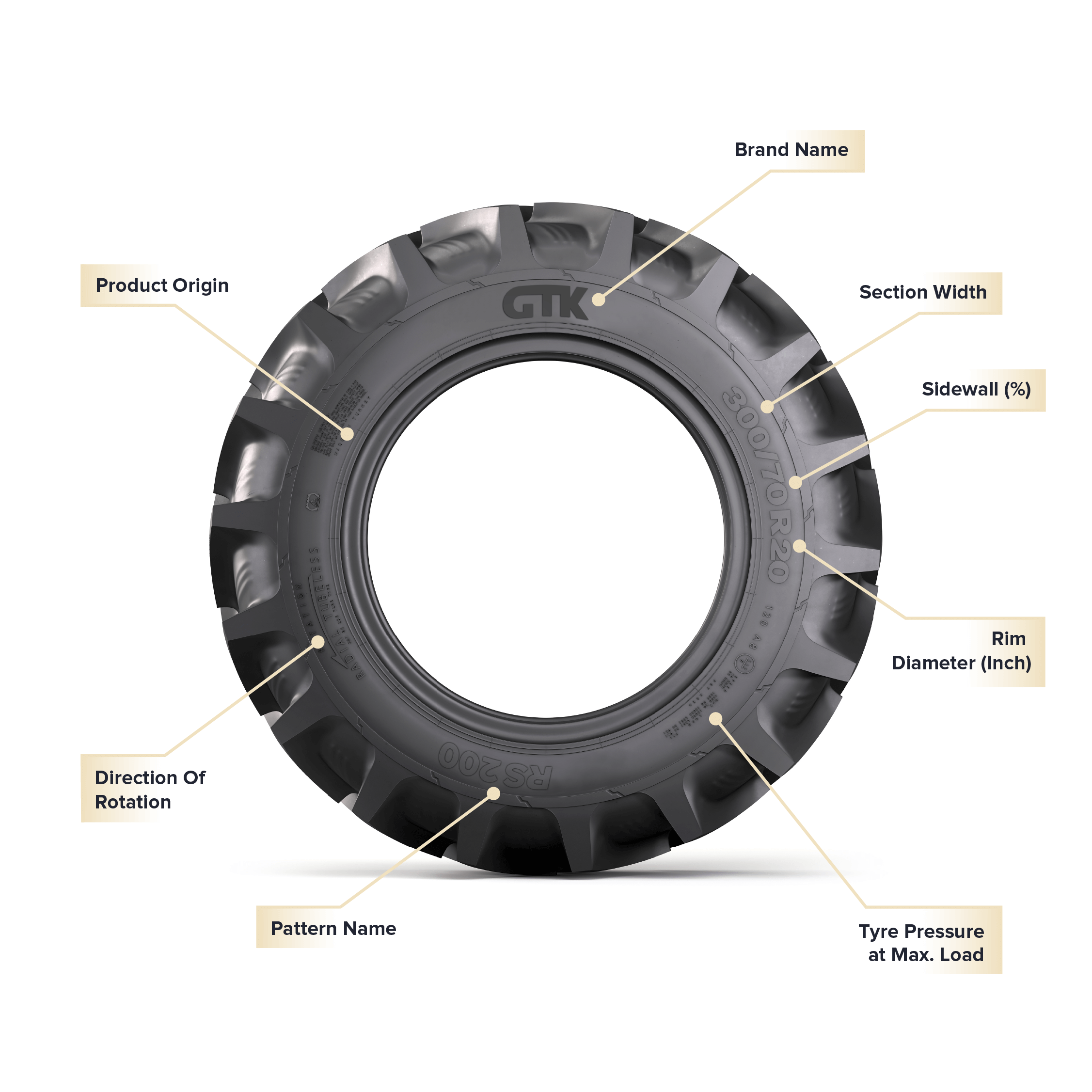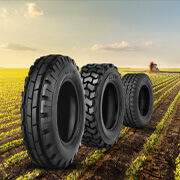TYRE INFORMATION

STORAGE OF TYRES
Tyres should be stored indoors, should be kept away from ozone-creating environments such as sunlight and electric motors. Tyres should be protected from contact with chemicals and moisture, should be stored in an upright position without interfering with the load.
MOUNTING AND DISMANTLING OF THE TYRES
Use the rim, outer and inner column dimensions of which are specified in the vehicle owner's manual. Make sure the rim is clean. For new tyres, use new inner tubes, columns and tubeless valves depending on the type. Make sure that the inside of the tyre is clean. Have the tyre mounting done by suitable machines and experts. Center the tyre fitted on the belt, apply a special lubricant solution to the heels and rim. Never use detergents, oils and silicones. Make sure the valve and cap are clean and new. After taking the necessary safety precautions, inflate with dry air according to the values in the instruction manual. (For safety reasons, the inflation cage should be used.)
POINTS TO BE CONSIDERED IN TYRE USE
Tyre Air Pressure:
Pressures other than those specified in the catalogs will shorten tyre life. When the tyres are cold, the tyres should be checked every fifteen days with a solid air gauge.
Overloading:
The load values specified in the vehicle catalog must not be exceeded.
Mechanical arrangement: the front arrangement, balance and brake settings must be checked according to the recommendations of the vehicle and tyre manufacturers.
Rough Road Conditions and Misuse:
Sudden braking, ramps and pits shall damage the tyre.
Tyre Replacement:
Make sure that the tyres are the same size. Do not match the new and used tyres. Do not use winter tyres outside the winter season. Do not use for safety reasons when the tread depth of the tyres exceeds the safety limit. Replace your old tyres with a new one.
TYRE DEFINITION
A pneumatic tyre is a flexible component of the wheel assembly made of rubber and reinforcing materials. Inflating the tyre with compressed gas enables it to carry the wheel load as a part of an axle load and to transmit long-gitudinal and transversal forces. In the unladen condition, the inflated tyre is essentially toroidal. A SOLID TYRE is a flexible component of the wheel assembly with a cross section made of rubber or another elastomer material containing some reinforcing material to guarantee a proper seat on the rim whereas air or compressed gas does not contribute to the load carrying capacity.
BASIC TYRE FUNCTIONS
Basic tyre functions means the normal capability of an inflated tyre in supporting a given load up to a given speed and transmitting the driving, the steering and the braking forces to the ground on which it runs.
TYRE STRUCTURES
DIAGONAL (or Çapraz) describes a pneumatic tyre structure in which the ply cords extend to the beads and are laid at alternate angles substantially less than 90° to the centreline of the tread. BIAS BELTED describes a pneumatic tyre structure of diagonal (bias ply) type, the carcass being restricted by a substantially inextensible circumferential belt.
RADIAL describes a pneumatic tyre structure in which the ply cords extend to the beads and are laid substantialy at 90° to the centreline of the tread, the carcass being stabilized by an essentially inextensible circumferential belt.
Self Supporting Tyres describe a pneumatic tyre structure of radial type provided with any technical solutions (for example reinforced sidewalls, etc) allowing the pneumatic tyre, mounted on the appropriated wheel and in absence of any supplementary component, to supply the vehicle with the basic tyre functions at specified speed and distance when operating in flat running mode
RIM WIDTH
The linear distance between the flanges of the rim.
SECTION HEIGHT
Half the difference between the Dış Çap and the nominal rim diameter
SECTION WIDTH
The linear distance between the outsides of the sidewalls of an inflated tyre excluding elevations due to labelling (markings), decorations, or protective bands or ribs.
OVERALL DIAMETER
The diameter of an inflated tyre at the outermost surface of the tread.excluding elevations due to labelling (markings), decorations or protective bands or ribs.
TYRE MEASUREMENTS
Measurements should be taken on the unloaded tyre mounted on its measuring rim at the recommended Şişirme Basıncı and allowed to stand for a minimum of 24 hours at normal room temperature before readjustment of the Basıncı back to its original level.
MAXIMUM TYRE DIMENSIONS IN SERVICE
Inflated tyre dimensions including permanent growth in service to be used by vehicle producers as a base in designing for tyre clearances. In addition the distortions of the tyre due to load, lateral and centrifugal forces are to be considered by the vehicle producers.
NOMINAL ASPECT RATIO
One hundred times the ratio of the section height to the section width of the tyre on its theoretical rim.
NOMINAL RIM DIAMETER
It is a size code figure for reference purposes only, as indicated in the tyre and rim size designation.
SERVICE DESCRIPTION
In addition to the Tyre Size Designation a tyre may be identified by a Service Description consisting of a load index (or two Load Indices in the case of single/ dual fitments) and a speed symbol.
LOAD CAPACITY
The maximum load a tyre is permitted to carry under specified operating conditions
INFLATION PRESSURE
Inflation pressure means the pressure taken with the tyre at ambient temperature and does not include any pressure build-up due to tyre usage.
SPEED SYMBOL
The SPEED SYMBOL indicates the maximum speed at which the tyre can carry a load corresponding to its Load Index under service conditions specified by the tyre manufacturer.
LOAD INDEX
The LOAD INDEX is a numerical code associated with the maximum load a tyre can carry at the speed indicated by its Speed Symbol under service conditions specified by the tyre manufacturer.





